The Corsair H80i GT and H100i GTX AIO Coolers Review
by E. Fylladitakis on November 16, 2015 8:00 AM EST- Posted in
- Cases/Cooling/PSUs
- Corsair
- Liquid Cooling
- Corsair Link
The Corsair H80i GT and H100i GTX
Both the H80i GT and the H100i GTX are based on the common configuration of a radiator, two hoses and one block that combines the CPU contact plate and the pump. The H80i GT is designed to take a single 120 mm slot while the H100i GTX requires two adjacent 120 mm slots. For both of these liquid coolers, Corsair ditched the standard thin corrugated/rubber tubing and is using thick braided tubes instead. The internal diameter of these tubes is not really larger, but they are more resistant to kinks and have significantly greater mechanical strength.
The main (and virtually only) physical difference between the H80i GT and the H100i GTX is the radiator. Both radiators are based on the same core design, a dual pass cross-flow configuration with wavy fins attached to the thin oblong tubes. The H100i GTX has a 276 mm long radiator that is 30 mm thick and can hold two 120 mm fans on either of its sides. The radiator of the H80i GT is 154 mm long and capable of holding one 120 mm on either of its sides, but it also is 49 mm thick, making up some of the lost mass. The thickness however increases the airflow impedance of the radiator significantly, which is why Corsair is supplying two 120 mm fans with the H80i GT to be used in a push-pull configuration, in order to maintain practical pressure and airflow levels. The 30 mm radiator of the H100i GTX has significantly lower airflow impedance and thus a push-pull configuration would not have a significant effect, particularly considering the already high pressure of the supplied SP120L fans.
Both of the coolers we review today share the same pump/block assembly. It is mostly made out of plastic, with an octagonal piano black top and a circular base. A grey cover with a semi-transparent company logo can be seen at the top. RGB LED lighting is installed beneath this cover, illuminating the company logo along with the top and the bottom side of the grey cover.
The copper contact plate is attached to the circular base of the block with eight screws. Thermal material is pre-applied to it and it comes with the Intel CPU mounting retention bracket from the factory. A retention bracket for AMD CPUs is included in the box.
One of the most important features of these two coolers is the Corsair Link support. By attaching the provided USB cable to an internal header on the motherboard (or to the Corsair Link Commander, if one is available), the user has direct control over almost everything regarding the coolers. The LED color can be changed manually or can be linked to a temperature, the speed of the pump and the cooling fans can be configured and custom cooling schemes can be programmed as well. The speed of the pump or fans can be set to one of the pre-programmed modes (e.g. Quiet, Performance, etc.), to a fixed speed or a custom cooling curve can be manually created.


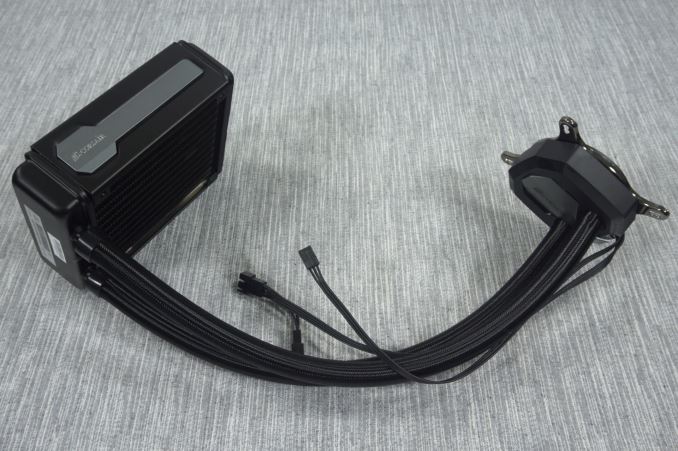
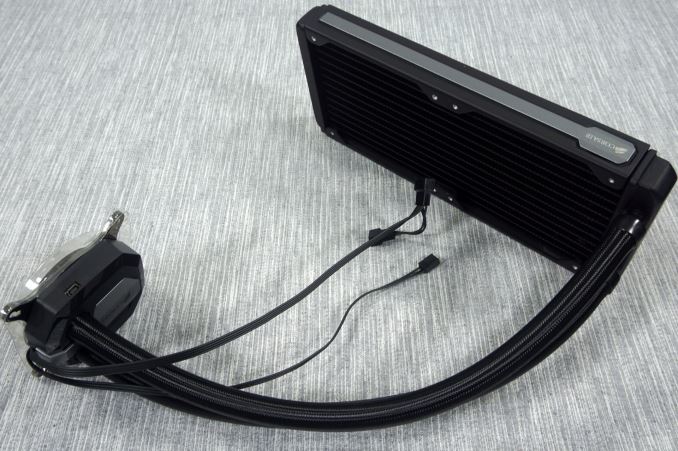
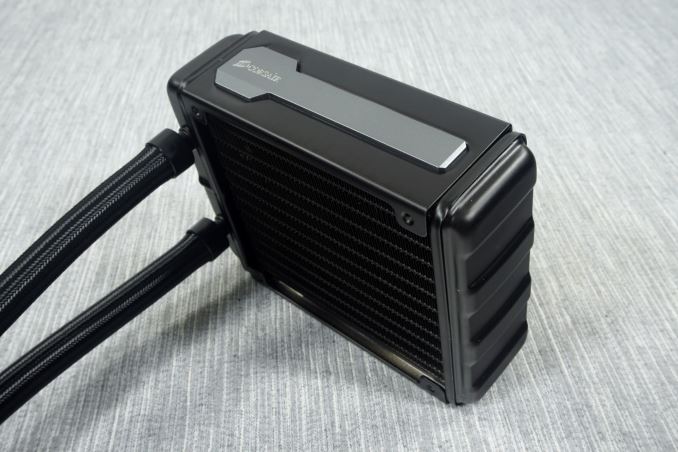
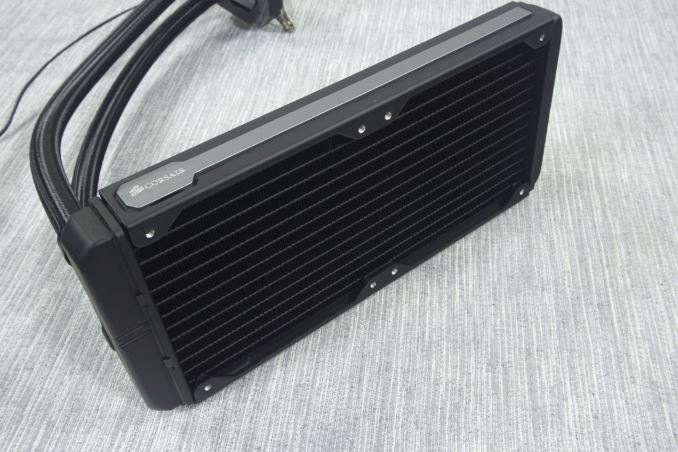
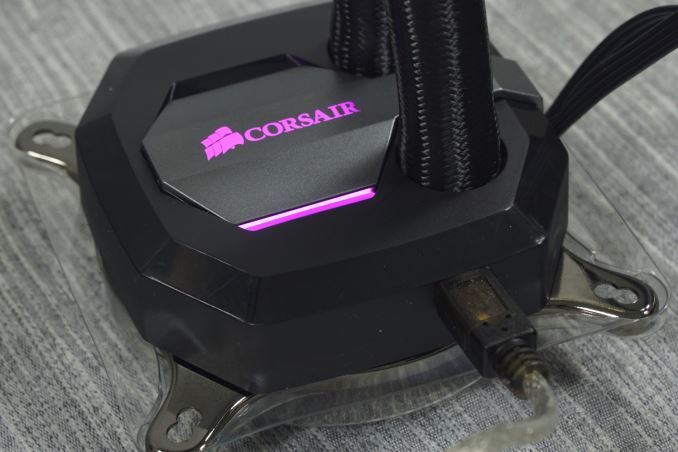
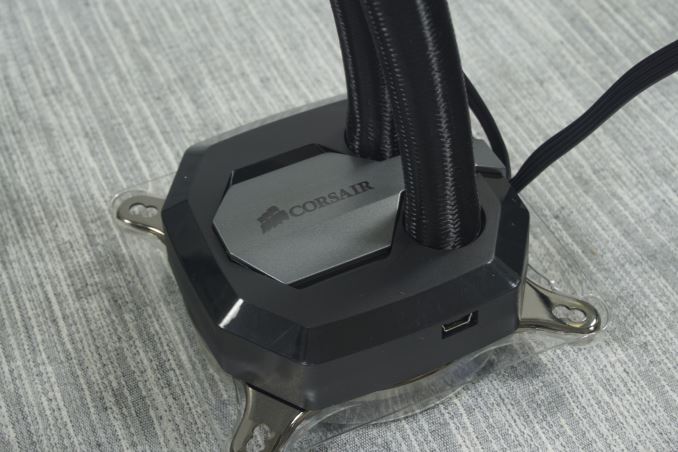

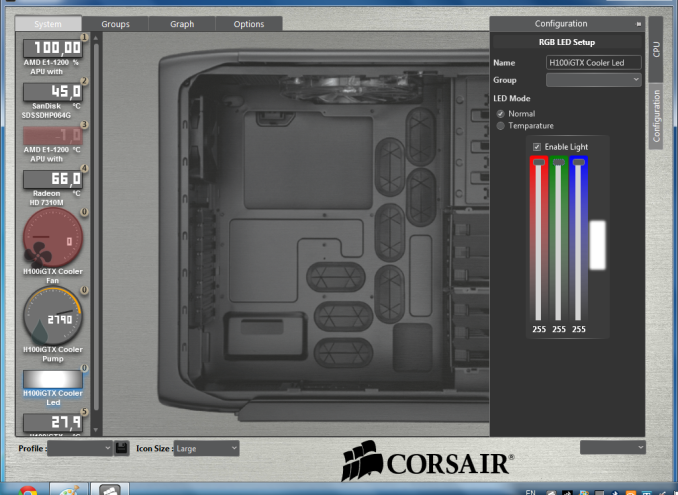
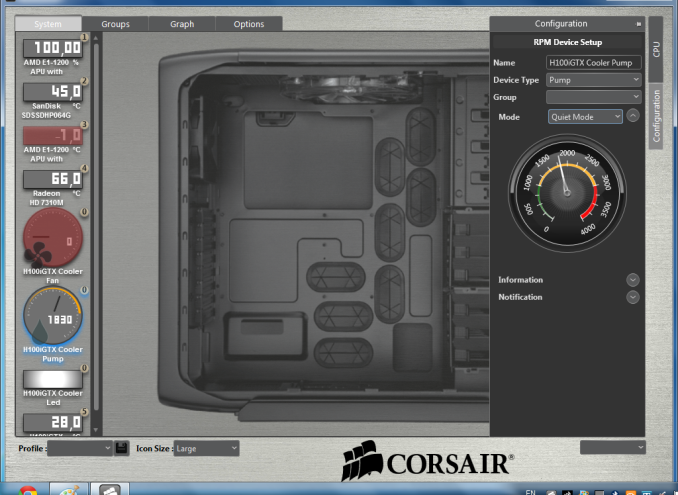
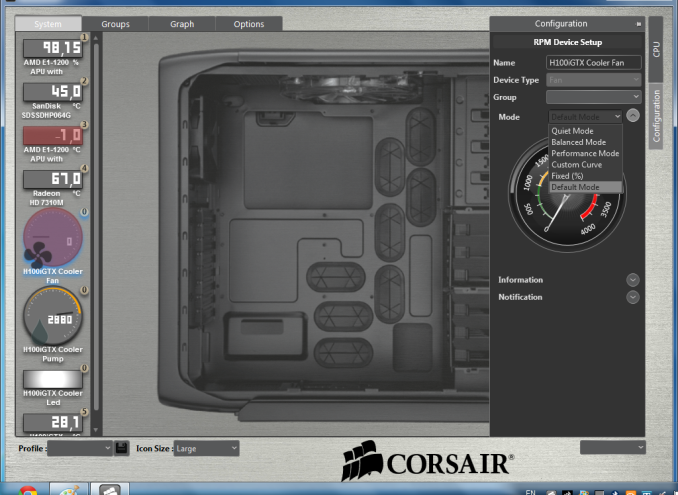








47 Comments
View All Comments
hapkiman - Monday, November 16, 2015 - link
I recently used the H80i GT in a new Skylake i7 6700k build and I am very happy with it. Very happy! It is quiet as a mouse and was relatively easy to install. I have a large Corsair Air 540 case, so the size of the unit was not an issue for me. I'll have to say that I am still old school and don't trust that factory TIM they pre-apply. I always remove it with alcohol and apply a pea sized dollop of MX-4 on the CPU die before mounting the water block. I am amazed everyday when I use this rig that it idles so cool. Right now RealTemp shows 14/13/12/15 (C). Absolutely great cooler. One thing you didn't realty talk too much about was the Corsair Link software. This software caused a slew of issues for me, including crashes, lockups/freezes, and a dozen errors in my Event Viewer. I uninstalled and reinstalled the software until I finally got fed up with it and completely uninstalled it and detached the USB cable from the pump. The cooler works great as I already stated, and I can still control the fans in my BIOS so no biggie I guess, but this Corsair Link leaves something to be desired. It's buggy and not worth the headache to have a multi-colored logo on the pump.HollyDOL - Monday, November 16, 2015 - link
What was your ambient temperature (give or take) while you measured those temperatures? Because 12-15°C sounds more like a peltier+compressor cooler...hapkiman - Monday, November 16, 2015 - link
Ambient in my office is about 21C or around 70F. I know - my best friend didn't believe me either and he came aND SAW.hapkiman - Monday, November 16, 2015 - link
Oops soory cut off answer there. It has to be a combination of this cooler working great, an extremely cool running processor, and my basement office staying cool 24/7. It's about 75F outside right now and my office is still around 20-21C and my idle temps are 15/13/12/13 C. It is AWESOME!HollyDOL - Tuesday, November 17, 2015 - link
I rather suspect there is something wrong with your measurement tool (does CoreTemp64 show same values?), otherwise you are 6-9 degrees below ambient (which shouldn't be possible without forced cooling). Such a temperature difference quite rings water condensation warning bells, depending on humidity and air flow around cpu block.maximumGPU - Tuesday, November 17, 2015 - link
Yeah sorry to burst your bubble but there must be something wrong with the measurement as HollyDol suggested. You cannot have lower temps than ambient with an AIO!Beararam - Tuesday, November 17, 2015 - link
Real temp is drunk. At the risk of being redundant, no AIO is going to get you below ambient. Not possible.hapkiman - Tuesday, November 17, 2015 - link
Ok - so I rechecked with AIDA 64 Sensor Panel and it shows temps a little higher, but still very good. Real good. Still below 20C. The digital thermometer on my wall next to a window reads 20C.17/18/15/16 on Aida 64 Extreme sensor panel.
hapkiman - Tuesday, November 17, 2015 - link
http://i1116.photobucket.com/albums/k561/hapkiman/...HollyDOL - Wednesday, November 18, 2015 - link
okay, that's officially weird. I'd be tempted to put thermometer on cpu block to get alternate readings. And, if it is still that low, sell that cpu back to Intel for lots of $$$.